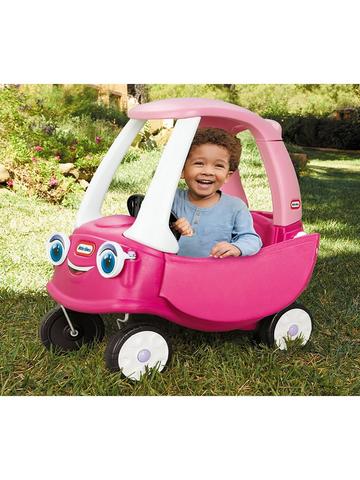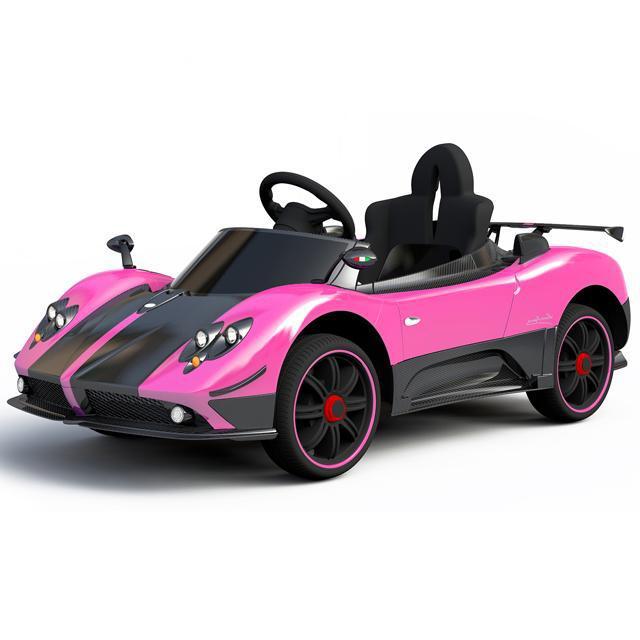Free Ideas On Selecting Electric Kids Cars
Wiki Article
What Do I Need To Be Aware Of About The Battery's Life And Charging Time Of An Electric Ride On Children's Car?
Knowing the battery life and the life span of a kid's electric car is crucial to make sure that your child has an enjoyable and safe ride. What do you need to know is the type of battery.
The majority of electric vehicles can be recharged and utilize either led-acid or lithium-ion batteries. The lead-acid batteries take longer time to charge and have a lower battery lifespan.
Battery Capacity
The ride-on vehicle's operating time is dependent on the battery's capacity. It is measured in amp hours or watt-hours. Large capacity batteries permit longer playtime without requiring recharge.
Run Time -
The run-time of an electrical ride-on vehicle is the length of time it can operate continuously with a single charge. This can be affected by factors like the battery's capacity, the power of the motor, terrain, or weight of a rider.
The typical run time for electric vehicles vary between 30 minutes and 2 hours on a single charge. However, certain batteries with high capacity may offer longer run times.
Charging Time
Charging time is the time taken to recharge the battery fully after it is depleted. Charge times vary based on the battery's capacity, charger specifications, and charging technique.
In general the time to charge an electric ride-on vehicle is between 8 and 12 hours. Certain models offer faster charging speeds, especially with lithium ion batteries.
It is essential to adhere to the manufacturer's recommendations for charging to ensure safety and longevity of the battery. The battery's performance and life span could be impacted by overcharging or undercharging.
Charging Methods Charging Method
Chargers that charge electric rides are typically connected to standard electrical outlets. Certain models allow rapid charging or come with an innovative charger that controls the rate at which the battery is charged.
To ensure that the battery is not damaged or harm to electrical systems, make sure the charger that comes in the ride-on vehicle is compatible with the charging port.
Batteries for Additional Use
Some ride-on electric vehicles will permit you to purchase additional batteries or spares for a longer playtime. If you have extra batteries, you could easily swap out the ones that are depleted to fully charged ones in order to cut down on the time between repairs.
Being aware of the life span of your kids' electric ride-on vehicle and its charging times will enable you to make sure that your child is having fun and exciting adventures as they explore their world. The battery's performance and longevity will be increased by constantly charging the batteries and following proper charging practices. Take a look at the top JCB ride on toys for website advice including car for toy, childrens electric cars, ride of car, two seater electric cars, ride on digger, electric rideons, toy cars, kiddies cars, electric rideons, toy a car and more. .

How Can Kids Car Models Be Used Both Indoors And Out?
In the indoors or outdoors, kids car models are made to work in various conditions and settings. This is how the designs differ - Indoor Use Cars The Indoor Use Cars
Size and weight cars that are designed for indoor use tend to be smaller and lighter and can maneuver more easily within tight spaces like living rooms, hallways or playrooms. They are compact enough to be maneuverable around tight corners and narrow passageways without damaging furniture or walls.
Low Ground clearance - Indoor cars are designed with low ground clearance in order to prevent getting stuck on rugs, carpets or thresholds. This allows for smooth, continuous motion on indoor surfaces.
Smooth Wheels The wheels of indoor-use automobiles are usually comprised of smooth substances such as rubber or plastic to give traction and grit on smooth surfaces like hardwood floors, laminate flooring, or tiles. They are engineered to reduce noise and prevent scratching or scuffing indoor surfaces.
Limited Speed - Indoor usage cars typically have lower maximum speeds to ensure safe and controlled operation in confined spaces. This helps prevent collisions or accidents that could happen with walls, furniture, or any other obstacle that may be found within.
Outdoor Use Cars -
Durable Construction: Cars built specifically for outdoor use feature strong materials like strong metal or plastic that are able to withstand rough handling, outdoor elements such as humidity and sun. They are immune to damage from the elements.
The higher the clearance of the ground is, the more able they will be to deal with bumps and uneven terrain. They can also maneuver over rough surfaces such as grass, gravel, or pavement without causing damage or getting stuck.
Traction Tires - The tires used on outdoor cars often include treads or patterns that are designed to increase the grip and traction of vehicles on surfaces which are slippery or uneven. This provides better control and stability when driving in outdoor terrain.
Weather Resistant - For outdoor use, cars can feature components that are resistant to moisture or environmental damage including waterproof casings, sealed electronics and even waterproofed ones. They can withstand the effects of mud, rain or puddles, without compromising performance.
High Speed - Outdoor use cars typically have faster maximum speeds to accommodate open spaces and longer distances commonly encountered outdoors. This provides a more exhilarating and thrilling riding experience for kids who are exploring the outdoors.
With these design traits and features, parents are able to pick a child's vehicle that best fits their usage needs and the environment that they intend to use it, whether inside or out. They can then ensure your child is safe, fun, and lasting experience. Have a look at the recommended read more for kids ride on cars for blog recommendations including toy and car, electric toy car, car toy toy, pedal car, car toy car toy, pedal car, ride electric car, childs ride on car, toy cars toy car, childrens ride on and more. .

How Do You Establish An Amount For A Ride-On Vehicle For Your Child?
In order to set an achievable budget for your child's ride-on vehicle, it's important to consider various factors. These include features, durability, lifespan, and financial circumstances. Find the most affordable price on your budget by doing some research about average prices.
Learn about the price average for the model of kid's ride-on car you are interested in. Toy stores, online retailers and manufacturer websites are a good source of price information.
Choose Must-Have Features to Have
Determine which features are essential for your child's enjoyment as well as security. Ride-on vehicles with features such as realistic sound effects, belts for seats, remote controls, and working headlights can cost more.
Prioritize the features according to your child's preferences as well with your budget.
Consider Durability and Longevity.
Select ride-on vehicles that are made of durable materials like premium plastics or metals. These can withstand frequent usage and harsh outdoor conditions.
Check reviews and get suggestions from other parents to determine the long-term durability and performance of the various models. An upfront investment of more than a few hundred dollars in a top-quality ride-on vehicle can result in savings in the long run through avoiding repairs and replacements.
Compare Prices from Different Retailers -
Comparing prices with other retailers can enable you to find the most affordable bargains. Local toy stores, department and specialty stores can offer affordable rates.
Be on the lookout for sales, discounts, or clearance offers that will help you save money on your purchase without losing quality.
Consider any additional costs.
If you're considering a ride on car for your child, take into consideration the extra costs, such as shipping fees tax and accessories.
Budget your total costs of ownership including accessories and maintenance to ensure you can afford them.
Set a Realistic Budget -
Based on your research and financial circumstances, you can create an affordable budget that's in line with your needs and priorities. Consider features, durability as well as long-term usage in determining the maximum amount you can afford for a ride on car.
Don't overspend or stretch your budget to buy unnecessary features in your child's game.
Take into consideration the long-term value -
A ride-on kids' car that is sturdy, flexible, and able to grow with your child can be an excellent investment. In the long run, investing in an expensive, feature-packed car might be more beneficial than cheaper alternatives.
If you're looking to buy a child's ride-on vehicle, set a price range and compare features, durability and lifespan. This will allow you to get the best value for your dollars. While keeping within your the budget, focus on factors that are most important for your child's safety and fun. Follow the best JCB ride on toys kidscars.co.uk info for blog tips including 2 seater electric cars, digger ride, pedal car, kidscars, electric ride along car, pedal car, childs car toy, ride ons, car toy car toy, childrens digger and more. .
